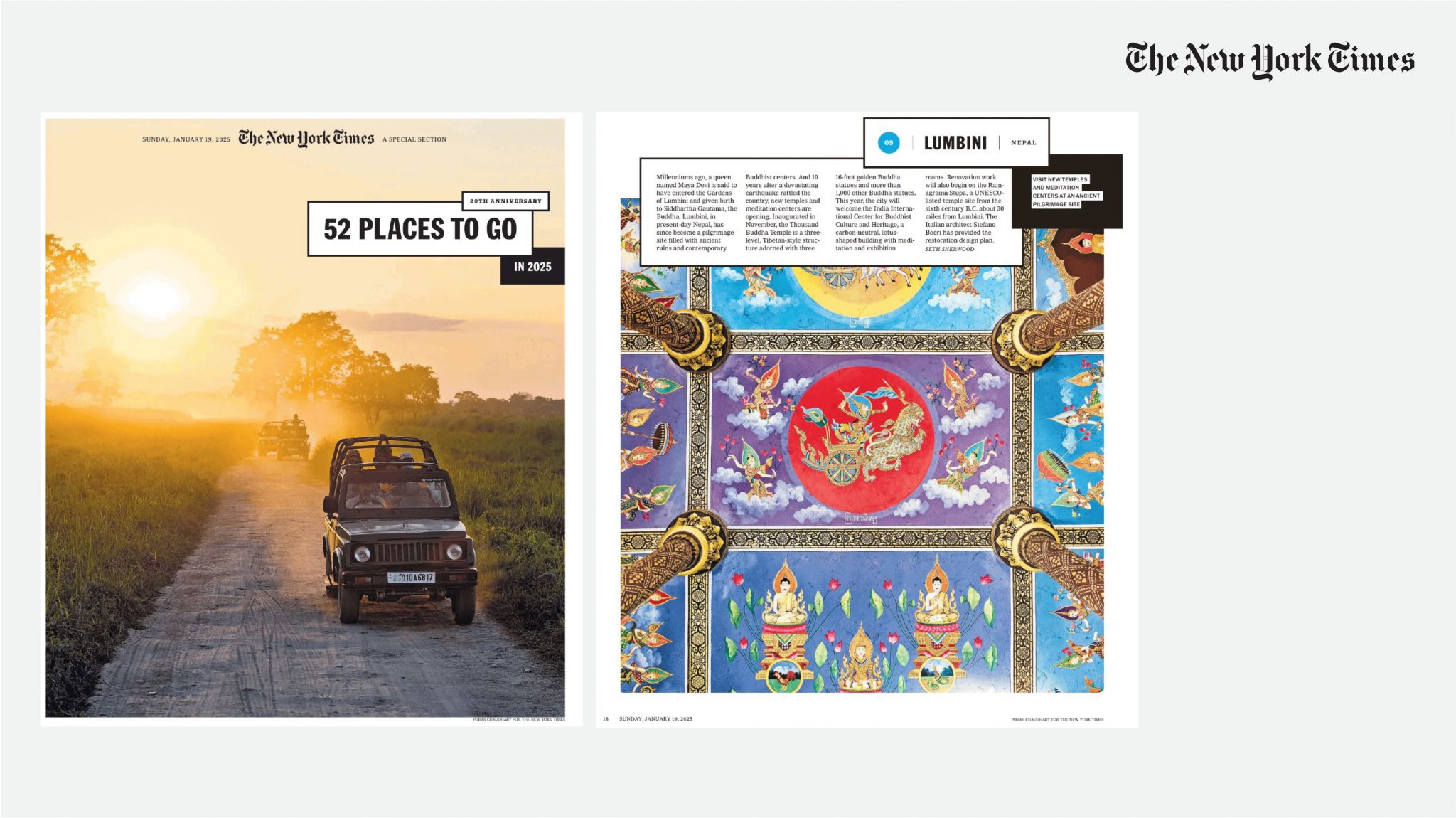
The New York Times features an article on the 52 places to visit in 2025, including Lumbini in Nepal and the Ramagrama Stupa, a UNESCO World Heritage Site and part of the master plan designed by Stefano Boeri Architetti.
The master plan for the Ramagrama Stupa, conceived by Stefano Boeri Architetti in Lumbini, Nepal, aims to enhance one of the most significant and symbolic sites in the Buddhist world.
Ramagrama is a municipality located in the Parasi district of western Nepal, on the banks of the Jharahi River, just 50 kilometers east of Lumbini, the birthplace of Gautama Buddha. This area is home to one of the most important historical, cultural, and religious landmarks in Buddhism: the Ramagrama Stupa, the last site to house a portion of Buddha’s relics that remains intact.
Stefano Boeri Architetti’s master plan, aligned with the historical and spiritual significance of the stupa – the sacred structure housing Buddha’s relics – seeks to elevate Ramagrama’s role as both an archaeological site and a place of prayer, meditation, and peace.
The project for the Ramagrama Stupa represents an extraordinary challenge: to create a center for prayer, meditation, and peace in one of the holiest locations in Buddhism. It does so while respecting the profound symbolism of Buddhist scriptures, proposing a design that aspires to become one of the most significant contributions to Nepal’s cultural heritage.
